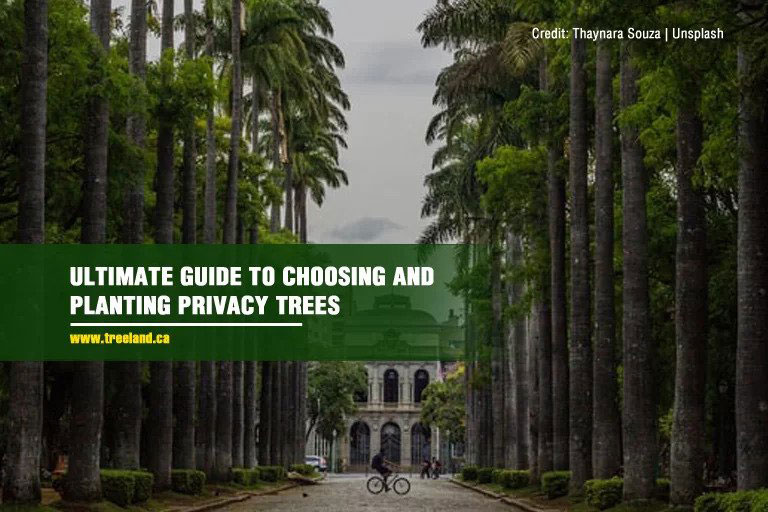Privacy trees provide several benefits for property owners. They add an imposing structure to your outdoor space while shielding you from street noise and prying neighbours. Besides their protective role, privacy trees also improve the air quality in your landscape and boost the value of your property.
Planting the right privacy trees isn’t something you play by ear, however. It requires careful planning. There are various tree options and a number of factors you need to consider first before putting up your ‘green fence.’
To help you make your tree planting project a success, we’ve put together this comprehensive guide to choosing privacy trees. This guide covers all you need to know: from planning and selecting tree species to planting guidelines and tree care and maintenance.
Part A: Planning
Planning should take precedence in your tree planting project. Do not rush this phase; sit down and take your time in choosing the right trees based on your goals and preferences.
There are 6 aspects you must look into when planning your privacy screen:
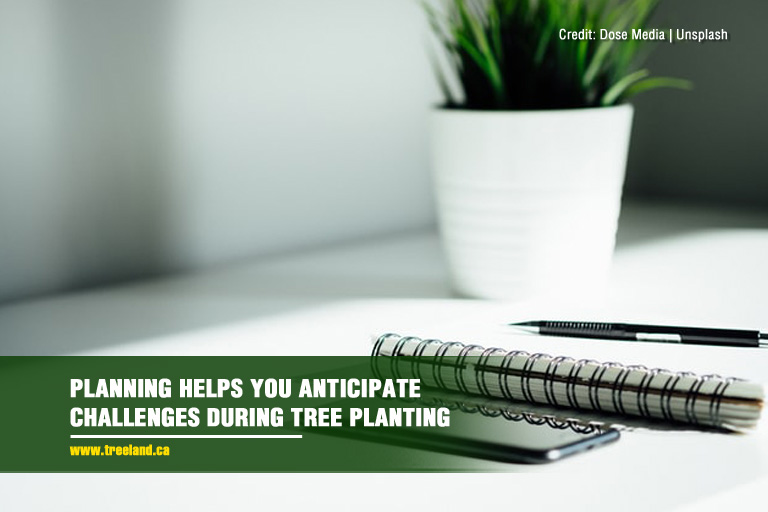
1.Purpose
What’s your main goal for planting privacy trees? Will your trees simply add a layer of privacy to your property or do you also want them to add a touch of colour and texture to your garden? Perhaps you also want to have a row of trees to serve as a green backdrop for your flowering shrubs. Determining what you want your trees to achieve will help narrow down your choices.
2.Space
Do you have enough space for planting your desired number of trees? How much of your total space do you need your trees to occupy? The available space in your yard will define the size and types of trees you choose. Your yard space will also determine how to space your trees. Ideally, there should be at least a 2-feet distance between smaller trees. Larger trees must be spaced out 5 feet apart.
3.Existing plants
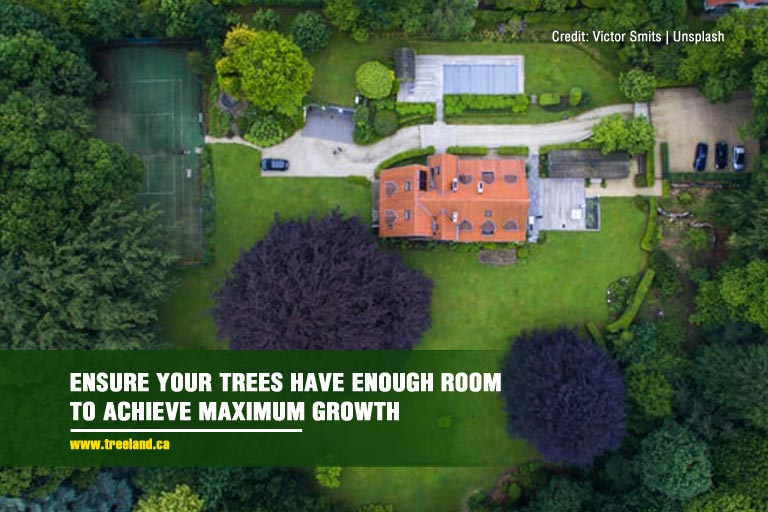
Got existing plants in your yard? Choose trees that have the same watering requirements as these plants. Make sure to plant water-dependent plants together. Likewise, drought-resistant trees must be planted in the same area.
4.Height
How tall do you want your privacy trees to be? Remember that rapid-growing trees can get very tall and wide quickly. If you want these tree varieties avoid planting them near sidewalks, utility lines, and buildings.
Routine pruning must be done if you really must plant your trees somewhere near these structures. Also, ensure that your trees have enough room to spread their roots out. Avoid planting near septic systems.
5.Growth requirements
Select trees that grow well in the kind of environment you have. Trees commonly thrive in moist and mildly acidic soils. You may need to add an acidic planting mix when planting in case your soil isn’t ideal for tree growth.
That’s why it’s also necessary to identify the pH balance of your soil before planting, whether it’s acidic or alkaline. Measure the different areas in your yard to get the average pH value.
6.Access to water and sunlight
Privacy trees require sufficient water to thrive. Make sure you have constant access to a water source like a sprinkler system. Ensure that your trees are exposed to plenty of sunlight.
Part B: Choosing Your Tree
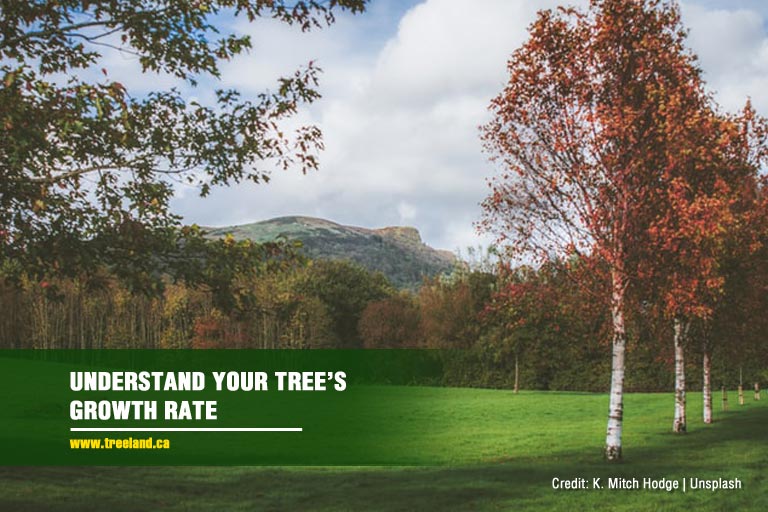
There are 3 main types of privacy trees you can choose from:
1.Deciduous
Want your trees to give your warmth during winter? Deciduous trees are a great choice. They shed off their leaves in the fall and stay bare in the winter. Since they remain leafless throughout the cold months, deciduous trees allow sunlight to shine into your home.
These trees provide a lush shade in the summertime, blocking the sun from streaming directly to your windows and making your home nice and cool. The natural cooling provided by shade trees helps you lower your energy bills.
Some of the most popular shade trees in Ontario are maple trees which come in a number of varieties:
- Autumn blaze – This type of maple turns into a beautiful ruby red colour in the fall. Autumn blaze maple trees have all the great characteristics of maples: full colour and good branch structure.
- Canadian red maple – This deciduous tree also turns into a beautiful red colour during the fall and remains green for the rest of the year. The Canadian red maple has a great branch structure and remains round and full.
- Sugar maple – Its gorgeous red and yellow colour scheme makes it an immensely popular tree. Sugar maples are native to Canada and are sure to brighten up your landscape.
2.Evergreens
These trees keep their green foliage all year round, which makes them a suitable choice for adding privacy to your bedroom and bathroom.
Depending on the species, evergreen trees can grow rapidly or slowly. It’s essential to understand their growth rate so you’d know how to properly care for them and be able to meet their growth requirements.
These are a few of the most common evergreens in Canada:
- Pine trees – The white pine trees are the most popular choice in this category. Their oval shape provides maximum privacy for screening. It’s possible to build a green privacy screen between 8 to 25 feet tall.
- Colorado blue spruce – These trees come from the Colorado family. They come in a range of colours blue, semi-blue and green. The three common spruce trees are Colorado spruce, Norway spruce and the Serbian spruce.
Part C: Planting Your Tree
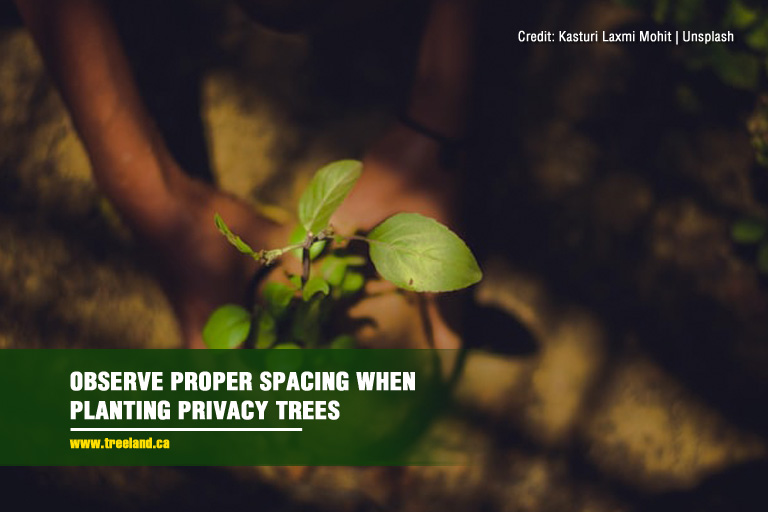
Here are important reminders when planting your privacy trees:
- Plant when the weather is cool. Too much humidity and a lack of air circulation prevent plants from evaporating water and drawing nutrients from the soil. That’s why it’s ideal to plant trees during cool weather. If it’s not possible to plant the seedlings immediately, place them in a cool shaded area to keep their roots moist. Soak bare-root trees in water for about 3 to 6 hours before planting.
- Keep the root ball intact. Cut burlap or plastic from the root ball and protect it from damage. Make sure to loosen the soil in the planting hole to allow the roots to break through.
- Cover the planting hole and remove debris. Shovel backfill into the hole and ensure that the roots are entirely covered. Remove air pockets by watering the planting area. Pull out weeds, grass, rocks, and other debris. Water your trees again to keep them moist. For best results, add a 3-inch layer of mulch around your tree. Mulching helps retain maximum moisture and reduces the number of times you need to water your trees.
- Mix trees, shrubs, and other plant varieties together. Do not plant the same type of tree in a row to achieve uniformity in their landscape. You’ll likely end up losing one or more trees with this approach. If you have enough space, try planting a combination of trees and shrubs, fruit trees, and flowers. This planting method is called cluster planting. Diversifying brings more colour to your landscape as well as reduces the risk of pest and disease spread. Cluster planting involves planting 3, 5, or 7 plants in a row as a way of blocking views or high winds. It also allows for good airflow.
Part D: Tree Maintenance
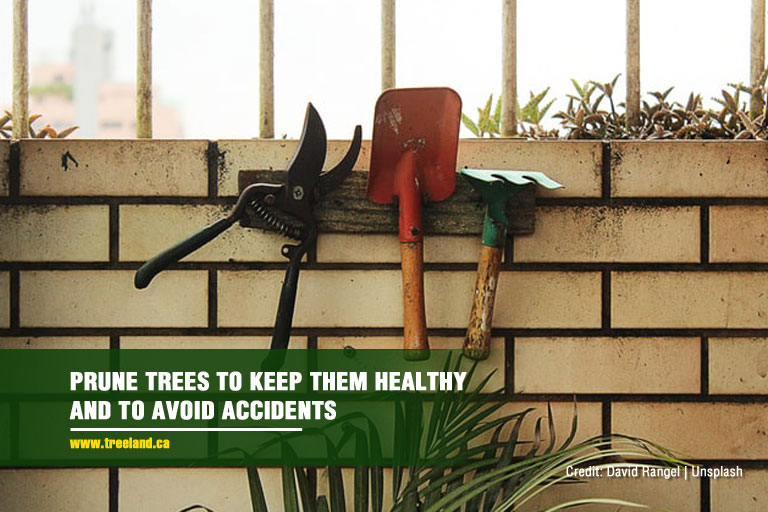
Maintaining newly planted trees is essential for their health and long-term growth. Prune off dead or sick branches. Observe proper pruning to prevent further damage to your trees.
Here are some tips:
- Cut outside the branch collar or the area between the branch and the trunk to avoid damaging the trunk. A damaged trunk is prone to decay.
- Prune small branches.
- Do not prune the tip of a young tree’s dominant stem.
- Avoid pruning too many branches of a newly planted tree, as this can result in growth issues.
Contact Your Local Tree Expert for Assistance
If you’re unsure about how to choose privacy trees, where to get them, and how to proceed with planting, feel free to seek the help of an expert tree grower and seller. In the GTA, Caledon Treeland is the name you can count on. We can walk you through the entire process of privacy tree growing. We also sell different varieties of privacy trees to Ontario property owners.
Our friendly and knowledgeable staff will gladly show you around and help you choose the tree which suits your needs the best. Call (905)-880-1828 to make an appointment today and let us help you find your tree.

